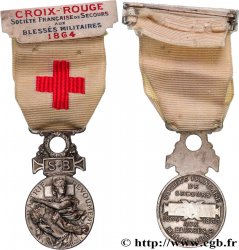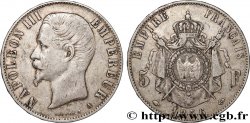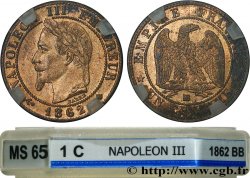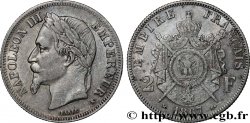fme_500779 - SECOND EMPIRE Médaille, Palais de l’Industrie, Vue des galeries
недоступный.
Товар уже продан в нашем интернет-магазине (2020)
Цена: : 80.00 €
Товар уже продан в нашем интернет-магазине (2020)
Цена: : 80.00 €
Тип Médaille, Palais de l’Industrie, Vue des galeries
Дата: 1855
Монетный двор / Город: 75 - Paris
Металл: copper
Диаметр: 67,5 mm
Ориентация осей монеты: 12 h.
Вес: 133 g.
Век: lisse
Пуансон: sans poinçon
Комментарии о состоянии
Exemplaire nettoyé. Traces de manipulation. Présence de coups
Ссылки в каталоге: :
Лицевая сторона
Аверс: легенда: PALAIS DE L’INDUSTRIE // À L’EXERGUE : COMMENCÉ FÉVRIER 1853. ACHEVÉ AVRIL 1855 / NAPOLÉON III EMPEREUR / A. FOULD. MAGNE. MINISTRES / VÈME DE ROUVILLE DIRECTEUR / ARDOIN, RICARDO, BOUSSIN, ADMINIST / VIEL ARCHIT: BARRAULT ING / YORK, GOLDSMITH CONSTR: / GERVAIS ET CIE EDIT.
Аверс: описание: Vue axonométrique sur le Palais de l’industrie.
Обратная сторона
Реверс: легенда: PALAIS DE L’INDUSTRIE / VUE DES GALERIES / GERVAIS ET CIE EDIT.
Реверс: Описание: Vue intérieure des galeries; signé : JACQUES WIENER FEC. et MANGUIN DEL.
Комментарий
L’exposition universelle fut décrétée pour le 15 mai 1855 pour témoigner au monde entier de la prospérité de la France, suite à l’exemple de l’Angleterre en 1851. Napoléon III inaugura cette première exposition universelle française en déclarant : “j’ouvre avec bonheur ce temple de la paix qui convie tous les peuples à la concorde”.
Le palais de l’industrie étonna par sa construction métallique et la hardiesse de la nef centrale haute de 35 mètres. Construit de 1853 à 1855, sur les plants de l’architecte Jean-Marie VIel (1797-1863), il forme un parallélogramme de fonte et de verre à deux étages, dont les façades principales ont 252 mètres de long, et les façades latérales 108 mètres. Il est composé d’un pavillon central et de pavillons d’angle. L’entrée principale se compose d’une immense arcade, flanquée de chaque côté de colonnes corinthiennes et surmontées d’une attique que décorent un bas-relief.
A l’intérieur, la nef principale (192 mètres de long, 48 de large et 35 de haut) est entourée au rez-de-chaussée d’une triple galerie formée par quatre rangées de colonnes de fonte supportant une galerie supérieure. Les voûtes, en verre dépoli, sont supportées par der fermes en fonte de fer.
Le palais subsistera jusqu’en 1900 pour ensuite être démoli et remplacé par les Petit et Grand Palais actuels construits pour l’Exposition Universelle de Paris en 1900.
Source : Médailles de Napoléon III, Hess Divo
Vous pouvez retrouver une vue du palais sur ce lien : http://www.carnavalet.paris.fr/fr/collections/vue-d-une-allee-transversale-du-palais-de-l-industrie.
Le palais de l’industrie étonna par sa construction métallique et la hardiesse de la nef centrale haute de 35 mètres. Construit de 1853 à 1855, sur les plants de l’architecte Jean-Marie VIel (1797-1863), il forme un parallélogramme de fonte et de verre à deux étages, dont les façades principales ont 252 mètres de long, et les façades latérales 108 mètres. Il est composé d’un pavillon central et de pavillons d’angle. L’entrée principale se compose d’une immense arcade, flanquée de chaque côté de colonnes corinthiennes et surmontées d’une attique que décorent un bas-relief.
A l’intérieur, la nef principale (192 mètres de long, 48 de large et 35 de haut) est entourée au rez-de-chaussée d’une triple galerie formée par quatre rangées de colonnes de fonte supportant une galerie supérieure. Les voûtes, en verre dépoli, sont supportées par der fermes en fonte de fer.
Le palais subsistera jusqu’en 1900 pour ensuite être démoli et remplacé par les Petit et Grand Palais actuels construits pour l’Exposition Universelle de Paris en 1900.
Source : Médailles de Napoléon III, Hess Divo
Vous pouvez retrouver une vue du palais sur ce lien : http://www.carnavalet.paris.fr/fr/collections/vue-d-une-allee-transversale-du-palais-de-l-industrie.








 Cообщить об ошибке
Cообщить об ошибке Распечатать страницу
Распечатать страницу Отправить мой выбор
Отправить мой выбор Задать вопрос
Задать вопрос Consign / sell
Consign / sell
 Информация
Информация



